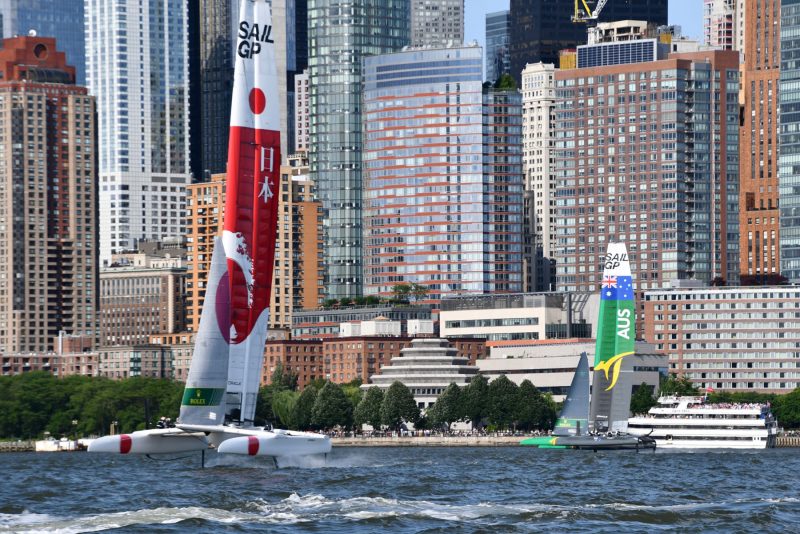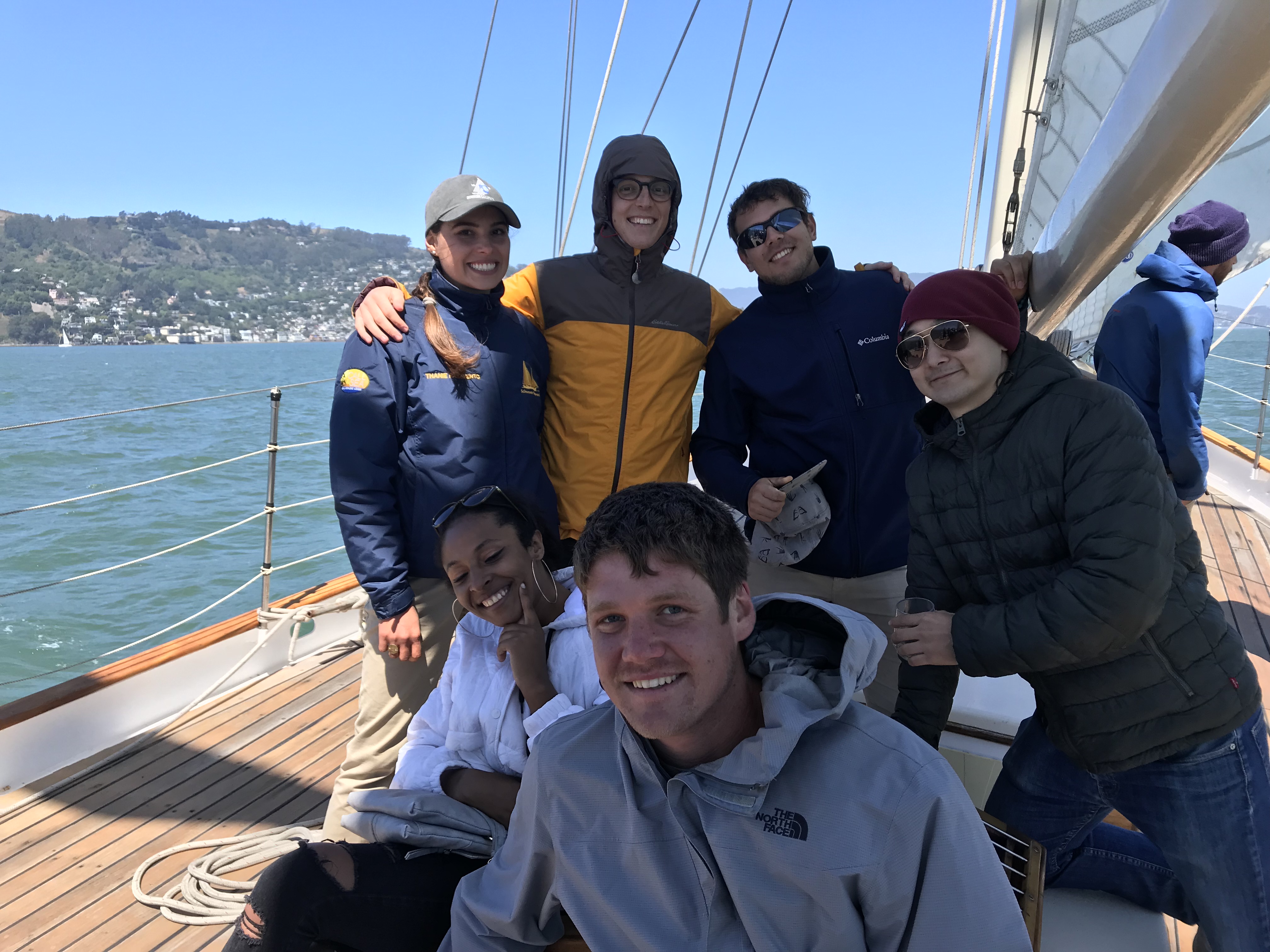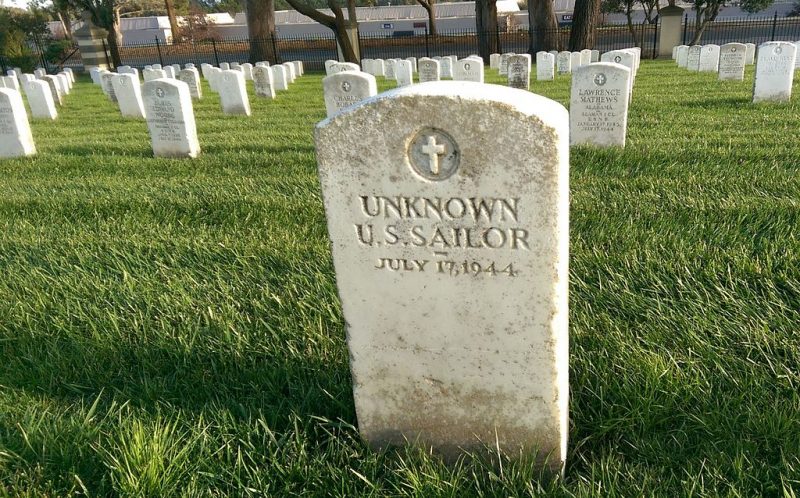
SailGP Hits New York City
Money can do a lot of things, but it can’t change the weather. Sometimes, though, you have to wonder.
The New York SailGP event, held this past weekend on the Hudson off lower Manhattan, managed to find a perfect weather window after a week of heavy rain and fog in the Northeast. After the dust settled, Team Japan would take their first event victory of the inaugural SailGP season, with the Australians hot on their heels.
Our visit also reminded us why San Francisco remains one of the best places in the world to host a sailing event, despite what was a spectacular show in New York. When the foiling cats first arrived in Northern California at the end of April, their huge wings were visible from almost any stuck-in-traffic vantage point around the Bay, making the event feel truly local. San Francisco’s relative consistency of the weather and optimal conditions also make it an incredibly reliable venue for any sailing championship.
Just sayin’.
Gearing toward shoreside “stadium” viewership, the SailGP New York event was run in a format similar to the San Francisco series, with the start and finish line just off a sea wall and close to the audience — though racing in New York was held from 5-6:30 on Friday and Saturday evenings. The rains that cleared not long before showtime on Friday brought in brisk but patchy northwesterly winds, creating exceptionally challenging conditions for the skittish, foiling cats. In fact, Friday’s puffy playing field flipped Team GBR in a 30-plus-knot puff just before the start of the first race, knocking them out for the day.

The Hudson is much narrower than the Bay and is surrounded by tall buildings, but also has a very strong, river-enhanced ebb current — not to mention all the ferries and commercial traffic. Despite the erratic conditions, the first day of racing still resulted in a familiar story with familiar players Team Australia, who took race one, and Team Japan, who took race two. Team USA had its own day-one carnage, as California wing-trimmer Riley Gibbs wrenched his back. The team’s shore manager filled in as wing-trimmer, though he’d never sailed aboard an F-50 before.

The conditions settled down a bit for Saturday’s racing, with lower peak winds and somewhat more consistent breezes — though still plenty of wind holes, which spread out the strictly one-design fleet. Some boats were faster to jump up onto foils when the puffs hit, and others were not as adept at shifting gears between puffs and lulls. But the variability also meant you never counted anyone out, as the magic puff card could be dealt to any boat, surging them ahead or catching them up from behind.
Saturday’s results had a familiar feeling with a couple of exceptions. Team USA flew in their wing-trimming coach Tom Johnson — who’d been competing in Moths in Europe — who landed just hours before the start. Johnson helped get the Americans back in the game and sail to their first-ever race victory. But the event was again dominated by Team Australia and their skipper Tom Slingsby, and Team Japan and skipper Nathan Outteridge, the latter of whom had two wins on Saturday and ended up in the final match race, which determines the weekend’s overall winner.

This weekend’s racing also produced the first boat-to-boat contact of the series when Slingsby put the pre-start ‘hook’ onto Outteridge, who then turned up sharply, tapping his stern into Slingsby’s hull. The umps called the contact a penalty on Slingsby for not leaving enough room to clear. The penalty allowed Team Japan to get ahead early.
Team Japan now sits atop the SailGP leaderboard with 140 points and the Aussies in a razor-close second with 139 points; Great Britain is in third place with 106 points; the Americans are in fourth with 105.
We asked Outteridge how he came out on top. He gave credit to his crew and also his early years learning to sail on a lake, where puffy, erratic conditions are the norm. It’s clear that Slingsby and Outteridge’s experience has them in another league, but the other boats continue to improve their game — so racing will continue to tighten up, especially in more consistent conditions.



So what was it like to sail on the Hudson vs. San Francisco Bay? “It was the same as in San Francisco with jibing down the wall and the spectators yelling at us; it was pretty action packed,” said Luke Parkinson, the flight controller and tactician for Japan team. “We had a fantastic time here, but it’s been a completely different experience. San Francisco is a drag race, an all-out speed battle. Whereas here it’s very tactical — it’s about speed chess, you need to make very calculated decisions, and the quicker you can make them, the better it’s going to be. The more I can fly the boat and keep it under control, the more [Outterridge] can play the game. So that’s really what our focus was.”
SailGP is an impressive event to pull off anywhere, given the infrastructure that has to be packed up and moved for each edition. Making arrangements in densely populated host cities while loading up six 50-ft foiling cats with wings, rudders, foils, tents and all the rest is a daunting proposition no matter how much money you have to spend. Regardless of the obstacles, the weather gods were once again smiling on SailGP as it held a very successful third edition of the event in New York.
SailGP’s fourth event will take place starting August 10 in Cowes, England. The final event will be in late September in Marseille, France.
This story has been updated
Bay Area Joins the Global Sailstice Celebration
On Friday, the summer solstice marked the official start to summer, but it was Saturday when the party really got started. On June 22, sailors throughout the Bay Area joined the world in celebration of the 19th annual Summer Sailstice. Dozens of local sailing clubs, schools and individual sailors untied their dock lines and spent the weekend sailing the Bay in perfect summer weather.
In Sausalito, visitors marched down the dock at the Bay Model to view the grand spectacle of Call of the Sea’s almost-complete tall ship Matthew Turner, before stepping aboard the schooner Seaward for a free two-hour cruise on the Bay. Farther along Sausalito’s shoreline, ASA-affiliated sailing school and club Modern Sailing offered introductory sails for new-comers, and coastal cruising classes for enrolled sailing students. Meanwhile club members chartered club boats and sailed to their favorite local destinations, such as Angel Island.

On the other side of the Bay, Afterguard Sailing Academy hosted a well-attended Play Day that included sailing small boats and shooting off expired safety flares. The Yacht Racing Association of San Francisco Bay, Sequoia Yacht Club, Treasure Island Yacht Club and The Club at Westpoint collaborated to host the 11th Annual Westpoint Regatta. Participants sailed from Treasure Island, through the center of SF Bay, and south to the Port of Redwood City where they joined the Island Time Party at Sequoia. (Please see the next ‘Lectronic for a few photos).
Elsewhere on the Bay — the exact location appears to be secret — Q+M Travels’ hosts Quincy and Mitchell treated guests to a leisurely weekend aboard their world-cruising yacht Espirit, a Kelly Peterson 46. In San Rafael, a band of marauding Viking sailors celebrated the Sailstice channeling their ocean-going ancestors for an evening of fun. San Rafael Yacht Club, Loch Lomond YC and other local groups combined to create a rousing Summer Sailstice celebration with music, dancing, dinner, Viking games and sea chanteys.
Whew . . . and that was just Saturday!
Sunday saw the Summer Sailstice celebrations continue with sailors enjoying a truly magnificent day on the water and hundreds of sailors and non-sailors converging on Corinthian Yacht Club for the Master Mariners 26th Wooden Boat Show. Hosted by the Master Mariners Benevolent Association, the annual show attracts visitors from all over the Bay Area and beyond to an eye-candy feast of classic sailing yachts and model boats and displays of seamanship.
What happens now that the weekend and Summer Sailstice have passed? This, my friends, was just the beginning. Summer is here and now is the time to sail, so get back out on the water every chance you get and make the most of the long days and summer breezes.

Send us photos of your sailing celebration and let’s continue to show the world that on the water and under sail is truly the best way to enjoy the summer.
Westwind Boat Detailing
And in Local Racing News . . .
The weekend’s biggest race — and biggest party — wasn’t in New York, actually. It was right here in the Bay, with the 2019 Westpoint Regatta. We were, unfortunately, unable to attend or race in this year’s event, but principal race officer Russell Breed sent us a few photos from the committee boat.
We’ll have a full wrap-up of the Westpoint Regatta in the August issue of Latitude 38.



Remembering the Big Bang
This month marks the 75th anniversary of one of the most horrendous events of World War II, which occurred right here in the Bay Area. On July 17, 1944, a mishap at the Port Chicago Naval Magazine (site of present day Concord Naval Weapons Station on Suisun Bay) triggered a massive explosion that killed 320 sailors and civilians; injured another 390; destroyed two ships, an entire pier, a railway and a locomotive that was on it; shattered windows as far away as San Francisco: registered 3.5 on the Richter scale at UC Berkeley; and blew shrapnel so high into the air that a pilot flying over the area saw debris flying by at 9,000 feet. It was the worst loss of life during the war not caused by enemy action.

The incident also signaled a landmark case in race relations — 202 of the dead and 233 of the injured were African-Americans, who accounted for 15% of all African-American naval casualties during World War II. When asked to go back to work a month later, 50 survivors of that day refused. The “Port Chicago 50” were eventually court-martialed, dishonorably discharged, and thrown into prison for 15 years for mutiny. A young lawyer named Thurgood Marshall finally brought the government to its senses — the men were all released 16 months later. The landmark case led the Navy to become the first branch of the military to desegregate its ranks beginning in February, 1946. Oh, and they adopted new standards for the safe handling of munitions, too.
In 1999, President Bill Clinton granted a presidential pardon to Freddie Meeks, one of the last surviving members of the Port Chicago 50.

Just last month, concurrent resolutions passed by Congress recognized the victims of the explosion and officially exonerated the Port Chicago 50 “in order to further aid in healing the racial divide that continues to exist in the United States.”

